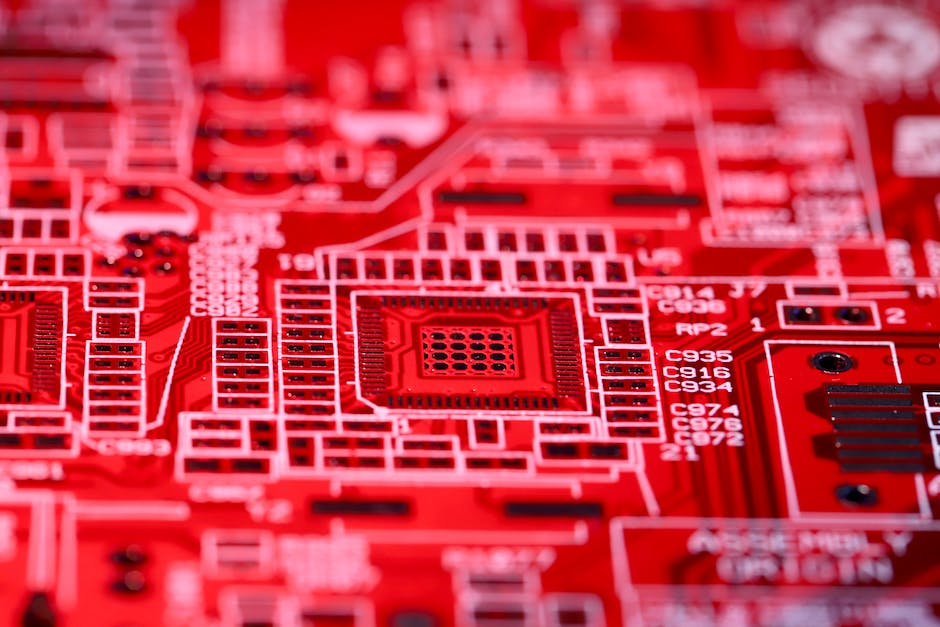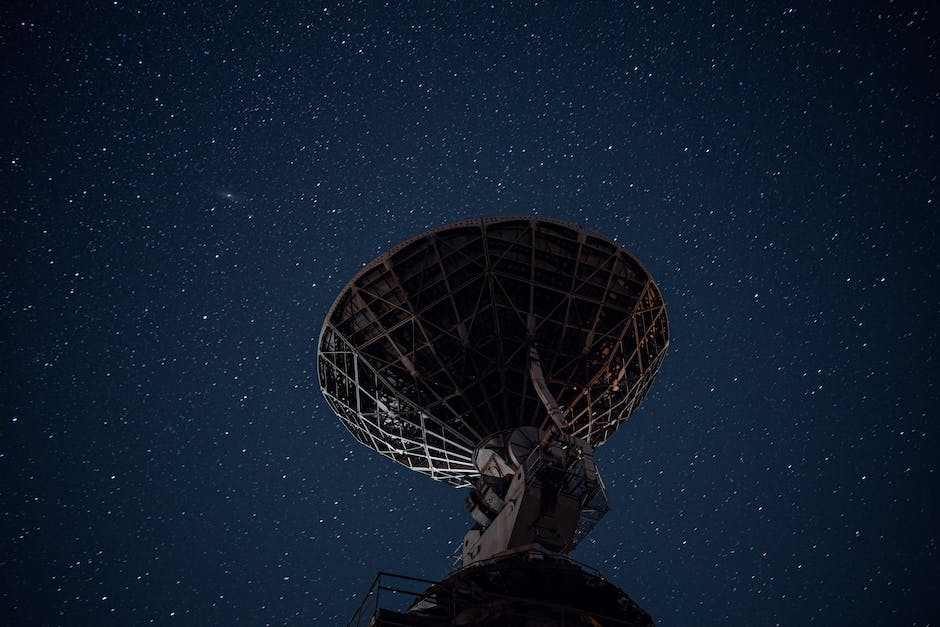What Is The Hydroponic System
Hydroponics is a revolutionary system of growing plants that eliminates the need for conventional soil-based methods. Instead, it relies on a nutrient-rich water solution to provide plants with all the necessary minerals they need to thrive. This method of cultivation has gained significant popularity in recent years due to several advantages it offers.
In the hydroponic system, plants are grown in a controlled environment, allowing for optimal growth and development. This controlled environment ensures that plants receive the right amount of light, temperature, and humidity, which can be adjusted based on the specific requirements of the plants being cultivated. By eliminating the dependence on external factors such as weather conditions, hydroponics presents a reliable and consistent method of growing plants.
One of the key benefits of hydroponics is its efficient use of resources. As the plants are grown in a water-based solution, there is no need for large quantities of soil, thereby conserving land. Additionally, water usage in hydroponics is significantly reduced as it operates on a closed-loop system, whereby water is recirculated and reused. This not only saves water but also minimizes the risk of nutrient runoff into water bodies, reducing environmental impact.
Furthermore, the hydroponic system allows for year-round cultivation, providing fresh produce regardless of seasonal limitations. With the ability to control various growth factors, crops can be grown faster and yields can be optimized, ensuring a consistent supply of high-quality produce. This reliability makes hydroponics an attractive option for businesses looking to establish a stable and profitable agricultural venture.
In addition to its practical advantages, hydroponics also offers potential benefits for sustainability. By eliminating the need for pesticides and herbicides, this method of cultivation has the potential to minimize chemical runoff and reduce the harmful impacts on ecosystems. Additionally, the controlled environment of hydroponics makes it easier to monitor plant health and detect any issues early on, allowing for more targeted and efficient pest management.
In conclusion, hydroponics is a dynamic and innovative system that offers numerous advantages over traditional soil-based cultivation methods. From resource efficiency to consistent yields, the hydroponic system presents a promising solution for farmers and businesses alike. In the next sections, we will delve deeper into the different types of hydroponic systems and explore how this technology is shaping the future of agriculture.
Definition of hydroponic system (3)…

Hydroponics is a revolutionary system of growing plants that eliminates the need for soil. Instead, plants are grown in a nutrient-rich water solution, allowing them to thrive without the traditional constraints of conventional farming methods. This method of cultivation is becoming increasingly popular in the agricultural industry due to its numerous advantages.
In a hydroponic system, plants are typically placed in an inert growing medium, such as coco coir, perlite, or rockwool. This medium provides support for the roots while allowing them to access the nutrient solution. The roots are exposed to this solution, which is carefully balanced with essential nutrients and minerals necessary for plant growth. The solution is delivered directly to the roots either through a continuous flow system, where the nutrient solution constantly circulates around the roots, or through a recirculating system, where the solution is periodically drained and replenished.
One of the major benefits of hydroponics is its ability to optimize the use of resources. Without the need for soil, water and nutrients can be precisely controlled, preventing wastage and ensuring plants receive the perfect balance of elements needed for their growth. Additionally, hydroponics allows for a more efficient use of space as plants can be grown vertically, maximizing the yield per square foot.
Another advantage of hydroponics is its ability to eliminate the risk of soil-borne diseases and pests. By removing soil from the equation, the need for harmful pesticides and fungicides is greatly reduced. This makes hydroponics a more environmentally-friendly and sustainable method of agriculture.
Furthermore, hydroponics offers greater control over the growing environment. Variables such as temperature, humidity, and lighting can be finely tuned to create the optimal conditions for plant growth, resulting in higher yields and faster growth rates. This level of control also enables year-round production, allowing farmers to grow crops regardless of external weather conditions.
In conclusion, the hydroponic system is an innovative and efficient method of plant cultivation that is gaining popularity in the agricultural industry. By providing plants with a nutrient-rich water solution and eliminating the need for soil, hydroponics offers numerous benefits, including resource optimization, disease control, and environmental sustainability. With its ability to achieve higher yields and greater control over the growing environment, hydroponics is revolutionizing the way we grow plants and has the potential to shape the future of agriculture.
Brief history and origins of hydroponics (4)…

The hydroponic system has gained significant popularity in recent years, revolutionizing the way we grow plants. But how did this innovative method of cultivation come into existence?
The origins of hydroponics can be traced back to ancient civilizations, particularly the Hanging Gardens of Babylon, one of the Seven Wonders of the Ancient World. Constructed around 600 BCE, the gardens utilized a basic form of hydroponics, allowing plants to grow without soil using flowing water. This early example demonstrated that plants could thrive without necessarily being rooted in the ground, paving the way for the future development of hydroponic systems.
Fast forward to the 17th century when scientific experimentation brought hydroponics further into the limelight. Sir Francis Bacon, an English philosopher and scientist, conducted various hydroponic experiments, integrating water, sand, and other mediums to support plant growth. His work marked a significant milestone in the development of modern hydroponics.
However, it was not until the mid-20th century that hydroponics truly emerged as a viable and efficient agricultural system. In the 1930s, Dr. William F. Gericke, a professor at the University of California, coined the term “hydroponics” and conducted extensive research on the subject. His experiments with growing tomatoes, cucumbers, and other crops in nutrient-rich water solutions without soil garnered attention and led to further advancements.
The involvement of NASA in the 1960s also propelled hydroponics forward. The need to find sustainable and efficient methods of producing food in space environments led to the development of controlled hydroponic systems. The successful growth of plants in these controlled environments not only provided astronauts with fresh produce but also highlighted the immense potential of hydroponics for Earth-based agriculture.
Today, hydroponics has become an established and sophisticated system used worldwide. Its ability to conserve water, maximize yields, and eliminate the use of pesticides makes it highly appealing to modern farmers. Its influence is seen across various sectors, from large-scale commercial operations to smaller home-based setups.
As we delve deeper into the topic of hydroponics, it is essential to understand its rich history and the contributions of past pioneers. By building upon their knowledge and experiences, we can continue to refine and optimize the hydroponic system, ensuring its relevance and effectiveness for future generations.
Explanation of how hydroponics works (5)…

Hydroponics is a modern and efficient method of growing plants without the use of soil. Instead, plants are grown in a nutrient-rich water solution, allowing their roots to directly absorb all the essential elements needed for growth. This system revolutionizes traditional agricultural methods as it provides a controlled environment where plants can thrive.
The hydroponic system typically consists of a reservoir of nutrient solution, a pump or air stone to oxygenate the water, and a growing medium to support the plant’s root system. The growing medium could be perlite, coconut coir, or even non-soil alternatives like rockwool or clay pellets. This medium helps anchor the plants and provides support for their overall growth.
One of the key advantages of hydroponics is its ability to optimize the use of resources. Unlike traditional farming, where large amounts of water and fertilizers are lost due to runoff, hydroponics ensures that water is reused and recycled within the system. The plants only absorb the required nutrients, eliminating wastage and reducing the environmental impact.
By utilizing a hydroponic system, plants can grow faster and yield higher crops compared to soil-based farming. The controlled environment allows growers to manipulate and optimize various factors such as light, temperature, and humidity, which are crucial for plant growth. This precision farming technique enables year-round cultivation, regardless of external weather conditions, making it ideal for regions with limited arable land or extreme climates.
Additionally, hydroponics minimizes the risks associated with pests, diseases, and weeds. Since the plants are not grown in soil, they are less susceptible to soil-borne pathogens and pests. This reduces the need for harmful pesticides and herbicides, making the final produce healthier for consumption.
Moreover, the hydroponic system offers significant space-saving advantages. As plants do not require extensive root systems to search for nutrients, they can be grown in a more concentrated manner. Vertical farming, for example, allows multiple layers of crops to be grown on top of each other, maximizing the use of available space.
In conclusion, hydroponics is a revolutionary system that has the potential to transform traditional agricultural practices. Its ability to provide a controlled environment, optimal resource utilization, and space-saving advantages make it an attractive choice for modern-day farming. As technology continues to advance, we can expect even more innovative developments within the hydroponic industry, ultimately leading to more sustainable and efficient food production.
Different variations and types of hydroponic systems (6)…

Hydroponic systems are revolutionizing the way we grow plants, offering a more efficient and sustainable method compared to traditional soil-based cultivation. There are several different variations and types of hydroponic systems, each with its own unique features and benefits. In this section, we will explore six popular hydroponic systems that are commonly used in commercial and home-based settings.
1. Nutrient Film Technique (NFT) System:
The NFT system is one of the most commonly used hydroponic systems. It involves a constant flow of nutrient-rich water that trickles over a sloping channel, allowing the plant roots to come into contact with the nutrient solution. The excess water is collected and recycled, reducing water consumption and wastage.
2. Deep Water Culture (DWC) System:
The DWC system, also known as the “floating raft” system, involves suspending plant roots in a nutrient-rich solution. The roots are submerged in the water, allowing easy absorption of nutrients. Oxygen is provided through air stones, ensuring proper aeration and preventing root rot.
3. Drip Irrigation System:
Drip irrigation is a widely used hydroponic system in both commercial and residential setups. It involves the slow and controlled release of a nutrient solution through a network of tubes and emitters. This method allows precise delivery of nutrients to each plant, ensuring optimal growth and minimizing water waste.
4. Aeroponic System:
The aeroponic system utilizes a misting mechanism to deliver nutrients directly to the plant roots suspended in the air. The roots are constantly misted with a nutrient solution, promoting rapid and healthy plant growth. This method is highly efficient, using less water and nutrients compared to other systems.
5. Wick System:
The wick system is a simple and low-cost hydroponic setup suitable for beginners. It relies on capillary action, where a wick transports the nutrient solution from a reservoir to the plant roots. While not as efficient as other systems, the wick system is easy to set up and maintain, making it a popular choice for small-scale growers.
6. Ebb and Flow System:
Also known as the flood and drain system, the ebb and flow system periodically floods the plant roots with a nutrient solution and then allows it to drain away. This cyclic process ensures that the roots receive ample nutrients and oxygen while preventing waterlogging. It is a versatile and adaptable system, suitable for a wide range of plant species.
These six variations of hydroponic systems offer different approaches to growing plants without soil. Depending on your space, budget, and specific crop requirements, you can choose a system that best suits your needs. Whether you are a commercial farmer or a gardening enthusiast, hydroponics provides an efficient and sustainable solution for cultivating plants all year round.
Advantages of using a hydroponic system (7)…
– Improved Plant Growth: One of the significant advantages of using a hydroponic system is the remarkable improvement in plant growth. By providing plants with precise amounts of water, nutrients, and oxygen directly to their root systems, hydroponics ensures optimal conditions for growth. As a result, plants tend to grow faster and produce higher yields compared to traditional soil-based cultivation.
– Water Efficiency: Hydroponics is an water-efficient method of cultivation as it utilizes only a fraction of the water needed in conventional farming. In a hydroponic system, water is recirculated and reused, minimizing water wastage. Additionally, the use of water in a hydroponic system is optimized, allowing plants to absorb more nutrients and reducing water loss due to evaporation.
– Ability to Cultivate in Limited Spaces: The hydroponic system presents an excellent solution for growing plants in urban areas or where space is limited. With vertical growing systems and compact setups, hydroponics allows for the cultivation of a large number of plants in a small area. This versatility enables individuals and businesses to grow their own fresh produce even in urban environments without the need for expansive farmland.
– Reduced Pest and Disease Issues: Traditional soil-based gardening is often plagued by pest infestations and diseases that can significantly impact plant health and productivity. In hydroponics, pests and diseases are minimized as soil is not used, eliminating the habitat that many harmful organisms rely on. Moreover, hydroponic systems can be enclosed, providing an additional layer of protection against pests and reducing the need for pesticides or herbicides.
– Consistent Crop Quality: With hydroponics, growers have more control over the growing conditions, ensuring consistent crop quality throughout the year. By carefully monitoring and adjusting factors like nutrient levels, pH balance, and light exposure, hydroponic systems enable growers to create optimal growing conditions for specific plants, leading to better uniformity and higher quality produce.
– Year-Round Cultivation: Unlike traditional farming that relies on seasonal changes and climatic conditions, hydroponics allows for year-round cultivation of crops. By simulating the ideal growing conditions indoors or in greenhouses, hydroponic growers can extend growing seasons, produce off-season crops, and supply consistent fresh produce throughout the year, irrespective of external weather conditions.
– Environmental Sustainability: Hydroponic systems have a smaller environmental footprint compared to conventional agriculture. By optimizing resource use, such as reducing water consumption and minimizing chemical runoff, hydroponics contributes to sustainable farming practices. Additionally, since hydroponics does not require soil tilling or the use of heavy machinery, it helps to preserve soil health and minimize soil erosion. Overall, hydroponics offers a more eco-friendly approach to agriculture.
Disadvantages and challenges of hydroponics (8)…

Hydroponics is a widely acclaimed method of growing plants without the use of soil, which offers various benefits such as improved water efficiency, faster growth rates, and year-round cultivation. However, like any system, hydroponics also comes with its fair share of challenges and disadvantages. In this section, we will explore some of the common drawbacks faced by individuals or businesses using the hydroponic system.
1. Cost: Implementing a hydroponic system can be expensive initially. The upfront investment includes purchasing the necessary equipment, such as grow lights, pumps, timers, and nutrient solutions. The overall cost can vary depending on the scale of the operation and the complexity of the chosen system.
2. Technical Expertise: Hydroponics requires a certain level of technical knowledge and skills. Maintaining the correct balance of nutrients, monitoring pH levels, and managing the overall system’s functionality can be challenging for beginners. A lack of expertise or failure to understand the intricacies of hydroponics may lead to crop failures or suboptimal growth.
3. System Malfunctions: Like any mechanical or technological system, hydroponic setups can experience malfunctions. A power outage, pump failure, or disruption to the nutrient delivery system can jeopardize the health of the plants. Regular maintenance and troubleshooting are essential to keep the system running smoothly.
4. Disease and Pest Management: While hydroponics significantly reduces the risk of soil-borne diseases and pests, it does not make plants immune to all types of infections. Diseases like Pythium and Fusarium can still affect hydroponic crops. Additionally, pests such as aphids, spider mites, or whiteflies can find their way into the controlled environment and cause damage if not promptly addressed.
5. Monitoring and Control: Hydroponics systems require continuous monitoring to ensure optimal conditions for plant growth. Parameters such as water and nutrient levels, temperature, humidity, and lighting need to be regularly monitored and adjusted. It requires consistent attention and a proactive approach to maintain a thriving hydroponic garden.
6. Power Dependency: Hydroponic systems rely heavily on a consistent power supply. If there is a power outage or disruption, it can affect the plants’ health and even lead to crop loss if not addressed promptly. Having a backup power source or contingency plans in place is crucial to mitigate this potential risk.
7. Lack of Diversity: Hydroponics is better suited for certain crops rather than others. Some plants, like root vegetables or large fruit trees, are challenging to grow using hydroponic methods. This limited scope may impact the variety of crops that can be cultivated within the system.
8. Environmental Impact: Although hydroponics reduces water usage compared to traditional soil-based farming, it still requires energy for lighting, pumps, and other equipment. The carbon footprint associated with these energy requirements should be considered when evaluating the overall environmental impact of hydroponic cultivation.
Despite these challenges, hydroponics remains a promising and innovative agricultural practice. As technology and practices evolve, many of these disadvantages are continually being addressed and mitigated. By understanding and overcoming these obstacles, individuals and businesses can successfully harness the benefits of hydroponics to cultivate a variety of crops efficiently.
Commonly grown plants and crops in hydroponics (9)…

Hydroponics is a system of growing plants and crops without soil, using a nutrient-rich water solution to support their growth. This innovative method of cultivation has gained significant popularity in recent years due to its numerous advantages, such as efficient water usage, higher yield potential, and the ability to grow plants in limited spaces.
In hydroponics, a wide range of plants and crops can thrive successfully, making it a versatile system for agricultural production. Here are some commonly grown plants in hydroponics:
1. Leafy Greens: Lettuce, spinach, kale, and other leafy greens are popular choices for hydroponic cultivation. The controlled environment allows these crops to grow rapidly and remain free from soil-borne diseases. Hydroponic leafy greens also tend to have a longer shelf life compared to their soil-grown counterparts.
2. Herbs: Basil, mint, cilantro, and parsley are commonly grown herbs in hydroponics. The controlled conditions enable the herbs to flourish with optimum flavor and fragrance. Hydroponic herb gardens are a great addition to restaurants, home kitchens, or any culinary venture that values fresh and aromatic ingredients.
3. Tomatoes: Hydroponic tomato plants have the advantage of delivering high-quality, flavorful tomatoes throughout the year. With the right combination of nutrients and environmental controls, hydroponic tomatoes can produce excellent yields and uniform fruit sizes.
4. Cucumbers: Cucumbers are well-suited for hydroponic systems due to their vining growth habit. By providing trellises or support structures, hydroponic cucumber plants can grow vertically, maximizing the use of limited space. Hydroponically grown cucumbers tend to be more uniform in size and shape while enjoying a higher resistance to pests and diseases.
5. Strawberries: Hydroponics offers an ideal environment for the cultivation of strawberries, allowing for optimal growth and fruit production. Hydroponic strawberry plants can be grown vertically, minimizing the risk of diseases and pests that often affect strawberries grown in soil.
6. Peppers: Whether it’s bell peppers, chili peppers, or other varieties, hydroponics can provide an ideal setting for their growth. Hydroponic pepper plants tend to be more productive, producing larger and more vibrant fruits compared to traditional soil-based cultivation methods.
The hydroponic system offers a multitude of possibilities for growing various plants and crops. As technology and research continue to advance, we can expect to see even more varieties successfully cultivated in hydroponics, providing sustainable solutions for the agricultural industry.
Comparison between hydroponic and traditional soil-based gardening (10)…

In today’s ever-evolving gardening landscape, the hydroponic system has emerged as a revolutionary method of cultivation. As an alternative to traditional soil-based gardening, this system offers numerous advantages and has gained popularity among both hobbyists and commercial growers. Let’s delve deeper into the comparison between hydroponic and traditional soil-based gardening to understand the key differences and benefits.
One of the primary distinctions between the two methods is the absence of soil in hydroponics. Instead, hydroponic systems utilize a nutrient-rich water solution that provides all the essential elements required for plant growth. This eliminates the need for constantly replenishing nutrient-depleted soil or dealing with harmful pathogens that may reside within it. In contrast, traditional gardening relies heavily on soil quality and fertility, which can vary greatly depending on geographical location and historical agricultural practices.
Hydroponics also offers precise control over environmental factors such as water, pH levels, and nutrient concentration. In soil-based gardening, these variables are more challenging to regulate since they primarily rely on natural conditions. This level of control allows hydroponic growers to optimize the growth conditions for plants, resulting in accelerated growth rates, higher yields, and healthier crops.
Another advantage of hydroponics is its efficient use of resources, particularly water. In a traditional soil-based system, water can be lost through evaporation, runoff, and inefficient absorption by plants. In hydroponics, water is recycled within the system, significantly reducing water consumption. This makes hydroponics an environmentally friendly option, particularly in regions facing water scarcity.
Furthermore, hydroponic gardening is not limited by seasonal variations or geographical constraints. With the ability to control the growing environment, plants can be cultivated year-round, regardless of climatic conditions. This enables growers to have a consistent and continuous supply of fresh produce, a benefit that traditional gardening often struggles to achieve.
However, it is important to note that hydroponic systems require an initial investment in equipment, such as pumps, grow lights, and nutrient solutions. While these costs may deter some individuals, the long-term benefits often outweigh the initial expenses. Moreover, the precise control offered by hydroponics minimizes the use of pesticides and eliminates the risk of soil-borne diseases, reducing the need for expensive treatments and promoting healthier and safer food production.
In conclusion, the hydroponic system and traditional soil-based gardening have their own distinct characteristics and advantages. While traditional gardening is deeply rooted in tradition and offers a more natural approach, hydroponics provides precise control, increased efficiency, and year-round cultivation possibilities. As technology continues to advance, it is exciting to see how hydroponics will continue to evolve and reshape the future of agriculture.

